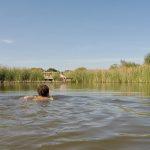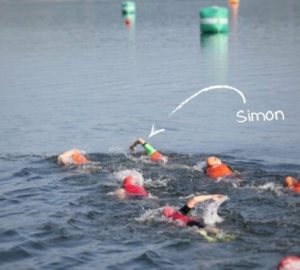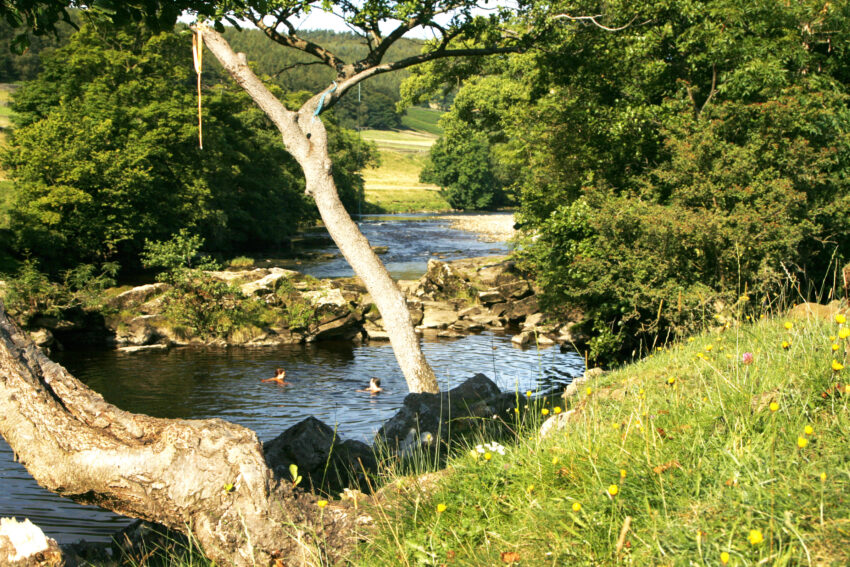
A beginner’s guide to wild swimming
Daniel Start, author of Wild Swimming, shares his top tips for taking the plunge.
‘Wild Swimming’ is the ancient art of swimming in natural waters such as rivers, lakes and waterfalls, as well as the sea – the sort of places our great grandparents learnt to swim in and the only places before swimming pools were invented in Victorian times. Today there is something slightly naughty, a little bit adventurous and wonderfully invigorating about wild swimming. Getting in, and out, is as much a part of the ritual as the swim itself. Some like to tiptoe, but I like to jump (if I have checked the depth first) and it’s the sheer fun of day spent by the river that makes wild swimming a perfect escape.
From Celtic enchanted pools to early Christian river baptisms, through to Wordsworth and Coleridge frolicking in Lake District waterfalls, there has always been a strong tradition of wild water swimming in Britain. The health and psychological benefits of dipping in natural waters have long been known – and our many spa towns are a testament to this. Florence Nightingale and Charles Dickens both claimed to have been cured by traditional forms of ‘hydrotherapy’.

Firstly, a one off dunk, particularly in cold water, creates intense vasodilation, pumping out muscle lactates, and bringing fresh blood to the extremities. The Turks and Romans understood this with their hot-cold plunge pools, and so does Paula Radcliffe, who would always take a cold shower before a race.
Second, after regular swimming, a process known as cold adaptation kicks in. Not only does this reduce your body’s sensation of coldness (making even the coldest water quite pleasant), it is clinically proven to boost mode, libido and the immune system – as shown in NASA experiments from the 1980s and more recent studies of year round swimmers immunity from colds and flu. Finally, a cold dip also provides a psychological kick start. A powerful endorphin shot is released and this natural high raises mood, elates the senses and creates an addictive urge to dive back in.
So why has it taken so long for wild swimming to come back into vogue? The industrial decades of the 1950s and 1960s decimated our rivers with unimaginable pollution, however thanks to European policy our river and lakes are cleaner now than they’ve been in living memory. Hidden havens for wildlife once more, these secret corridors into forgotten corners of our countryside are places to swim with kingfishers and otters. Bobbing along with a frogs-eye view of the world, wild swimming is the perfect way to commune with nature, seek inspiration, and be humbled by the immensity and wonder of the natural world.
How to get started
If you want to get started you need very little beyond some trunks, a small travel towel (or sarong), and ideally some lightweight aqua shoes (old trainers work fine). Plan a walk or run so you arrive hot and sweaty, and with some practice you should be able to manage 20 minutes without a wetsuit. For a longer session, or if you are heading into unknown territory – particularly the sea – you will need wetsuit. A simple swim cap will also conserve a huge amount of heat, and add to your visibility. Don’t forget a bag in which to bring wet kit back home again. You don’t need to be an athletic swimmer, but you should feel confident in the water, and happy to swim underwater, ride with a current and battle with mud.
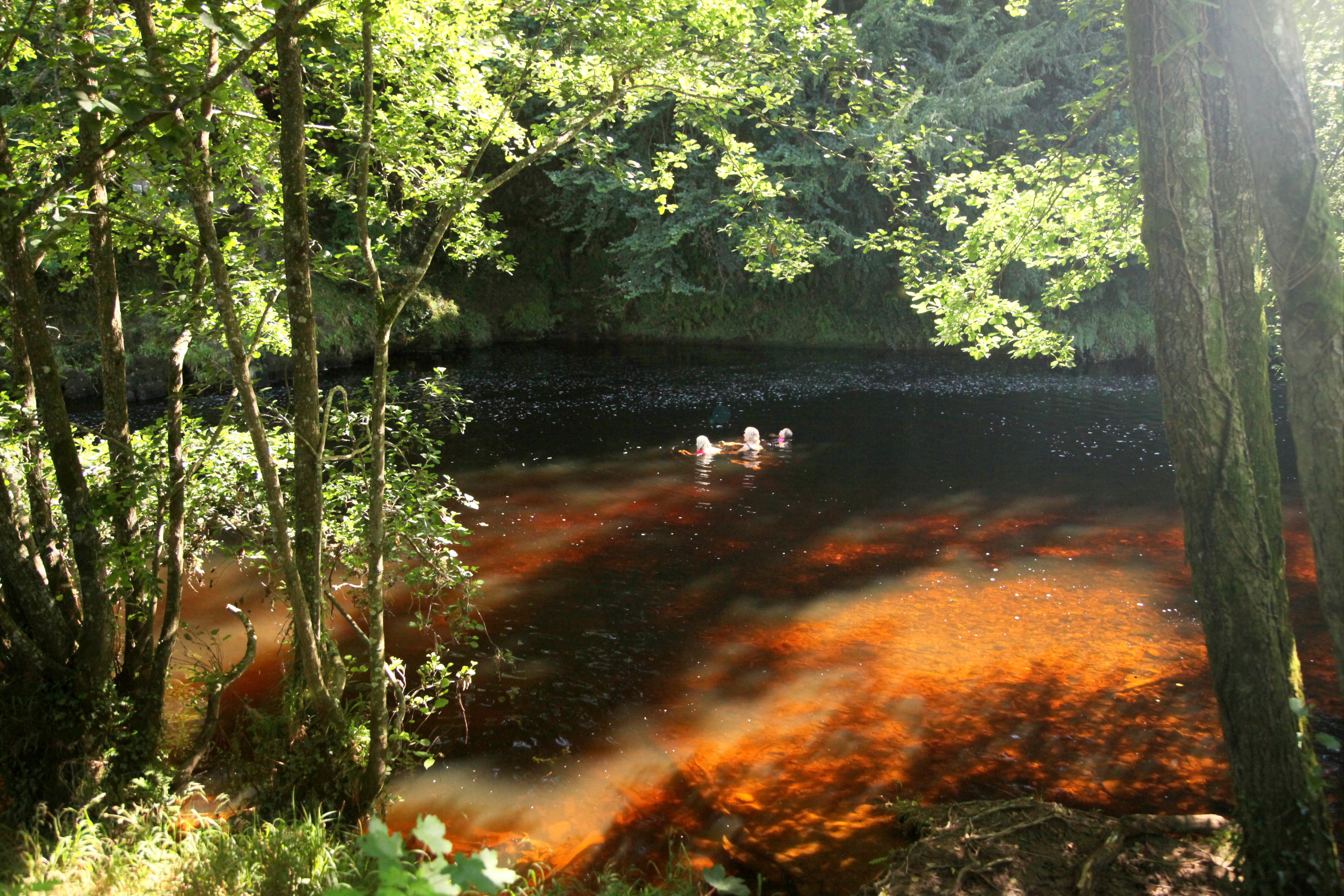
Staying safe
To stay safe, never swim alone and remember, if this is your first time, stay or swim close to the shore. Cold water will dramatically decrease your range at first. Count on being able to swim a tenth of the distance you can in a warm pool, so practise in a safe zone and increase your range slowly. If it’s your first time swimming in cold water, enter the water gradually to see how your body reacts – and beware of ‘cold water shock’ which can bring on hyperventilation. When you get out, it can take longer than you think to warm up, so have plenty of dry clothing ready, and ideally head straight off on another walk or run.
Other health hazards can include blue-green algae, sometimes found in lowland lakes in hot summers (best avoided as it can create a rash), swimmer’s itch (if you spend a lot of time wading through pond weed where snails breed) and, in extremely rare cases, Weil’s disease. This latter illness is caught from rat urine, mostly around urban waterways. It enters the skin through open cuts and wounds (so wear a waterproof plaster if you have a cut). It is easily treated with antibiotics (see your doctor if you develop flu like fever within a week of wild swimming) but if left to develop, it can kill.
Currents
Currents aren’t necessarily dangerous – you’re not going to be sucked under – but they can be disorientating and may take you out into deeper water or close to an obstruction. Even shallow water, if it’s moving fast enough, can knock you over and carry you away. Always consider: if I do lose my footing or get swept downstream, where will I get out? In rivers with a strong current, keep an eye on downstream, and always plan your emergency exit in case you are carried downstream. Currents can be especially powerful directly under large waterfalls or weirs – never jump directly into the tumult below falling water.
In the sea, don’t swim from headlands unless you understand tidal currents, and don’t swim in high surf conditions – off shore rip currents can form around cove edges and along sandy beaches, in between the surf breaks, and they can carry swimmers out to behind the surf line (where they then dissipate). If this happens, exit the current by swimming parallel to the shore, and come back in on the surf. The same is true if you are caught in a fast river – swim to the shore or side where the water will be calmer.
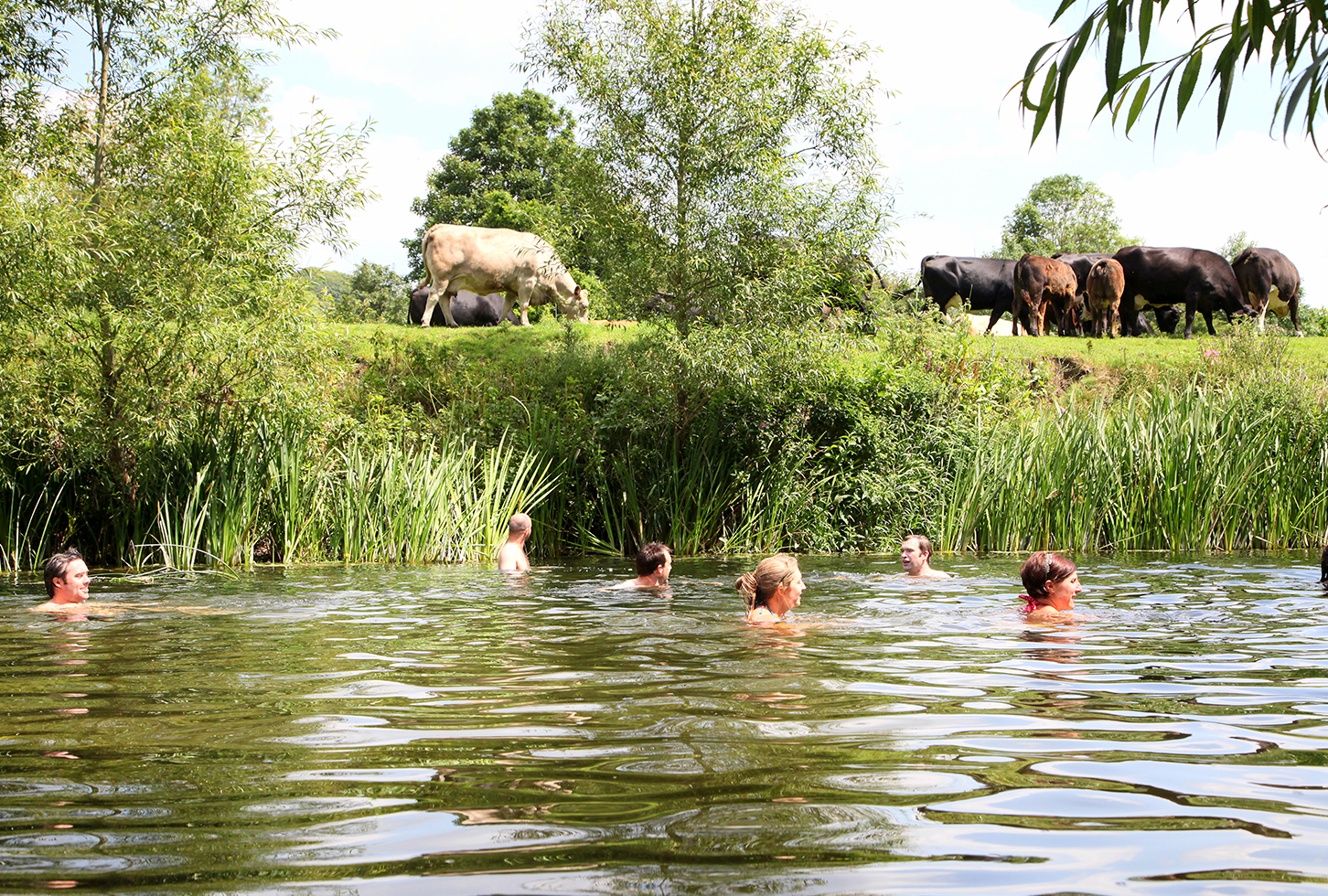
Swimming with friends
For safe swimming, never swim alone. Go with a friend, and always keep a look out for each other. Even better, go with a group. You can find like-minded people by searching Facebook for ‘wild swimming’ groups (there are a wide range of regional groups and links are given on wildswimming.co.uk). Devon, Cornwall and the Lake District are particularly active regions. Outdoor Swimmer magazine publishes a list of events each month, and these are growing in number every year. This can be a great place to meet people.
Also organise your own friends. Many people don’t know how much they like wild swimming until they try it. Lure your mates out a on hot day. Suggest a pub walk, but along a well-known swimming river with good swimming spots (e.g. the Thames, Wey, Wye, Ouse, Avon, Dart or Wharfe). Ensure everyone brings swimming costumes and a lightweight towel or sarong. Once people are hot and active they are more likely to take the plunge, and if you are lucky you will find other people already enjoying the water, which will entice people in.
Children, particularly, love playing in water. Encourage their love of our outdoor waterholes but keep a constant eye on all children. Watch out for signs of hypothermia (uncontrollable shivering is the first stage) as this can quickly cloud judgement and lead to slips, trips and falls. If there is a lot of splashing and jumping going on, try to encourage kids to keep their mouth closed, and avoid swallowing the water. Drink too much and it will give young tummies belly ache and the runs.
Where to wild swim
Some people like to drift downstream on a river safari, others like to follow a mountain brook dipping in every pool or waterfall as they go. I like rope swings, rive tubing and places for jumping, while others would prefer to take a canoe ride, and jump in for a swim along the way. Whatever your style you will find many places recommended in the various wild swimming guidebooks, or if you search the internet for wild swimming places or maps.
To find your own places, all you need is an Ordnance Survey map (ideally 1:25,000) and some map reading skills, or download using the Viewranger app on a smartphone. On smaller rivers look for old weirs (marked by a straight line across the river) which create pools in rivers otherwise too shallow for swimming. On larger rivers, especially those with locks and boats, it should be deep enough to swim anywhere. Examine the bends of rivers, where the inside often creates a beach while the outside deepens into a deep pool. Bridges are often built where the river naturally narrows into a gorge, and these can make excellent plunge pools for bridge jumping. Bridges, fords and riverside tracks indicate there will be few problems with access. In National Park areas much of the land will be marked orange or ‘access land’ with free right to roam. Lakes and rivers in these areas are often wilder and perfect for a dip, as you can get right up to the bank or shore. Waterfalls will also be marked, and many have a plunge pool where the water has scoured out a bowl.
While mountain areas will often be dramatic with waterfalls, gorges and tarns and the cleanest of waters, the water will be cold, good for short and exhilarating plunges only. Lowland areas will have warmer winding rivers and lakes, better for a longer swim, but with a greater possibility of bugs and beasties. Check the ‘historic river water quality’ using the Environment Agency online maps.
Wild Swimming: 300 hidden dips in the rivers, lakes and waterfalls of Britain by Daniel Start is available from Wild Things Publishing. For more places and safety information visit www.wildswimming.co.uk.







